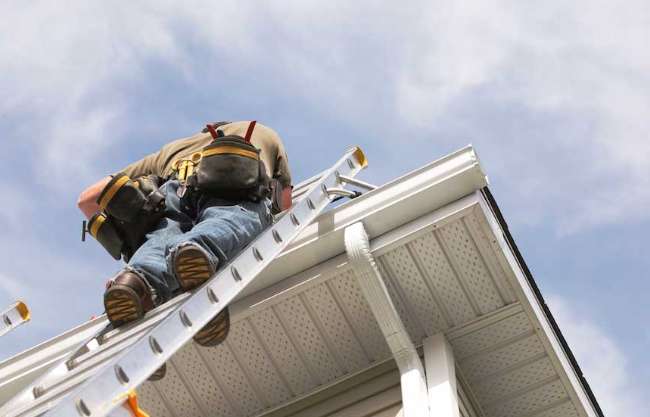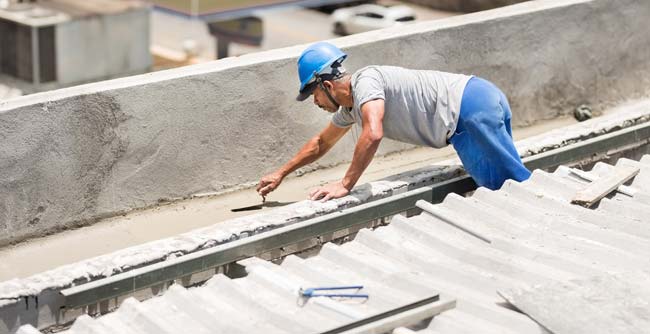Just How to Evaluate Different Roof Covering Options for Your Structure Demands
Reviewing roof covering alternatives for your building requires a detailed strategy that thinks about numerous factors such as the planned use of the framework, neighborhood climate problems, and product attributes - Roofer. It is essential to evaluate the advantages and drawbacks of various roofing types, from asphalt shingles to steel and clay tiles, while additionally factoring in initial prices and long-term maintenance.
Assessing Your Structure's Demands
To efficiently review roofing choices, begin by thoroughly assessing your building's demands. Beginning by thinking about the structure's meant use, as various structures might require varying roof specs. Household roofings commonly focus on aesthetic appeals and insulation, while business buildings may focus on sturdiness and load-bearing capacity.
Next, examine the local environment problems that will certainly impact roof covering performance. Aspects such as temperature level variations, rainfall degrees, and wind patterns can affect material selection and style. A roof that masters a pleasant climate may not do too in areas prone to hefty snowfall or severe heat.
Additionally, evaluate the architectural integrity of your building. Guarantee that the existing framework can sustain the selected roof products, especially if considering heavier alternatives. It is also vital to assess any type of local building regulations or laws that might determine certain requirements for roof.

Contrasting Roof Covering Products
When an extensive evaluation of your structure's requirements has been completed, the next action involves comparing various roofing materials. Each material offers distinct advantages and disadvantages, making it vital to align your choice with your certain demands and conditions.
Asphalt tiles are commonly recognized for their cost and ease of installation, making them a preferred choice for property structures. On the other hand, steel roof, understood for its toughness and durability, can endure extreme climate condition but might include a higher initial financial investment.
Clay and concrete ceramic tiles offer exceptional thermal insulation and visual appeal, particularly for Mediterranean-style design, yet they need a more durable structural support due to their weight. Timber shakes deal an all-natural look and great insulation properties however may require much more upkeep and are vulnerable to fire risks.
Reviewing Expense and Spending Plan
Evaluating your roofing choices necessitates a cautious assessment of price and spending plan considerations. The overall allocate a roof covering job makes up several aspects, including material expenses, labor expenditures, maintenance, and prospective lasting savings. It is necessary to establish a clear budget plan prior to discovering particular roof covering materials, as this will certainly lead the decision-making process and assist you stay clear of overspending.
Begin by getting quotes from several service providers to understand labor prices in your area. Ensure that these estimates include all required solutions, such as elimination of the old roof, installation, and any kind of extra functions, like insulation or air flow renovations - Roofing Contractor. Next off, analyze the cost of various roofing materials, considering both preliminary setup expenses and anticipated life-span

Understanding Power Performance
Power efficiency plays a crucial function in the choice of roof covering products and systems, substantially impacting both look at this website energy usage and total convenience within a building. A well-chosen roof can enhance thermal efficiency, decreasing the requirement for home heating and cooling systems, which subsequently decreases power expenses and reduces environmental effect.
When examining roof covering choices, take into consideration products that mirror rather than take in heat. Light-colored or reflective roofing products can significantly reduce roofing system surface area temperatures, causing reduced energy use during warm months. In addition, appropriate insulation and ventilation are important to maximize the power effectiveness of the entire roof. Insulation prevents warmth transfer, while air flow alleviates heat build-up in the attic room area.
One more essential factor is the roof's durability and maintenance requirements. Sturdy products that require much less regular replacement add to long-term power cost savings. The power effectiveness of a roof covering system can likewise be evaluated through its compliance with established sustainability scores such as Power STAR or LEED.
Taking Into Consideration Aesthetic Charm
A check that roofing system's visual allure considerably affects the total appearance of a structure, complementing its building design and enhancing aesthetic charm. Sylvania Roofing Contractor. When examining roof alternatives, it is essential to think about next just how the chosen material, color, and style will integrate with the existing structure and community. A properly designed roof covering can raise also the simplest of buildings, transforming them right into aesthetic centerpieces
Different roof materials offer various aesthetic high qualities. Standard shingles might evoke a classic charm, while steel roof covering can present a modern-day, smooth appearance. In addition, the shade of the roof covering product plays a critical function; lighter shades can make a building show up more roomy, while darker tones may create a cozier setting.
Furthermore, building elements, such as dormers and eaves, can improve the roofing's aesthetic effect. It is advisable to seek advice from specialist designers or designers to make certain the selected roofing alternative lines up with the total style intent. Ultimately, a roofing system should not only offer functional benefits yet likewise add favorably to the structure's aesthetic, reflecting the owner's taste and the character of the surrounding atmosphere.
Conclusion
